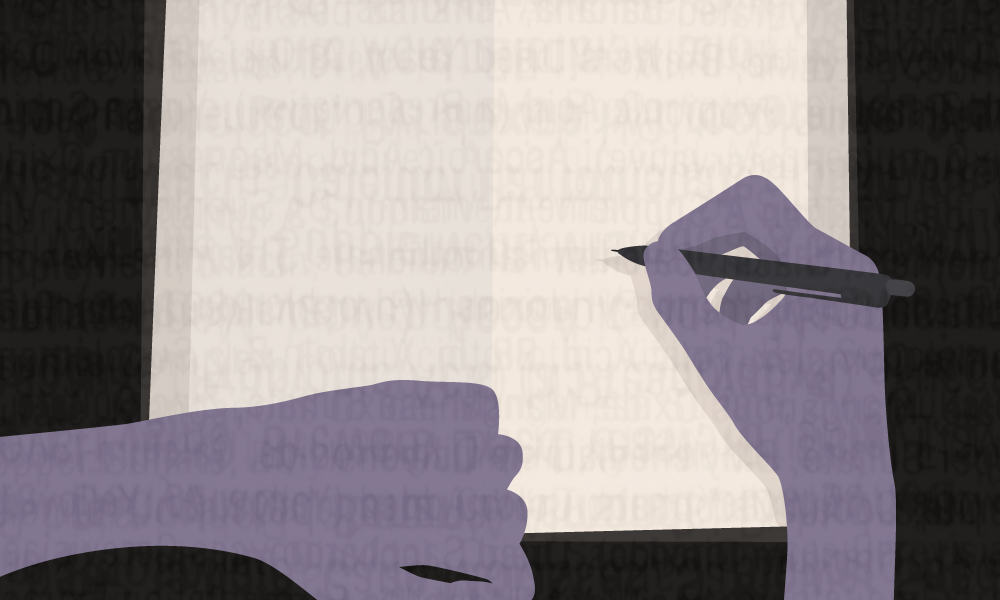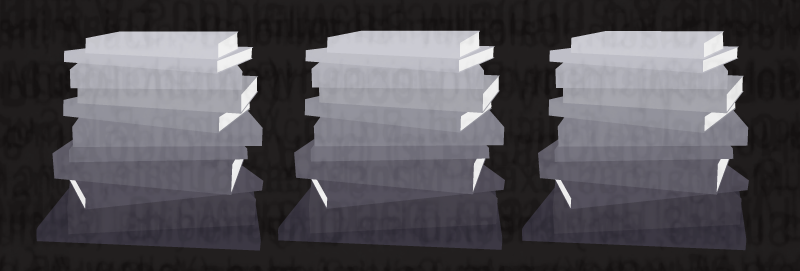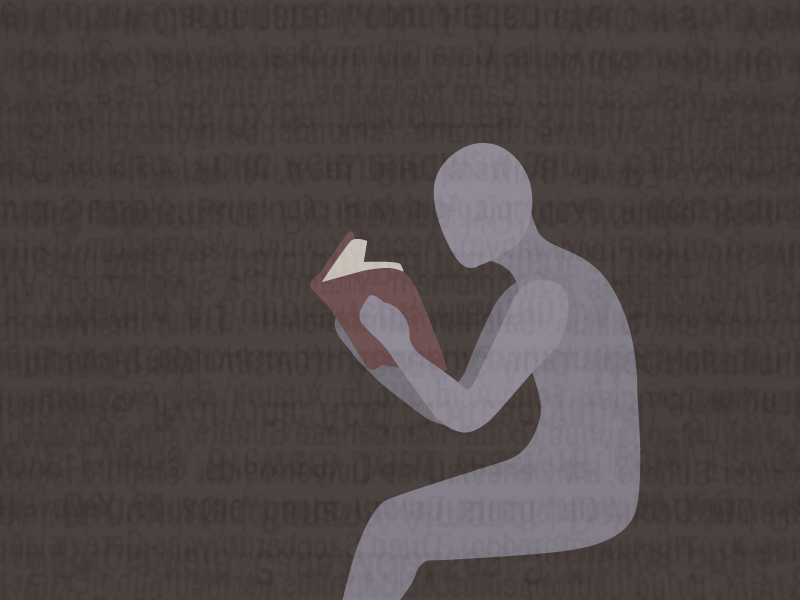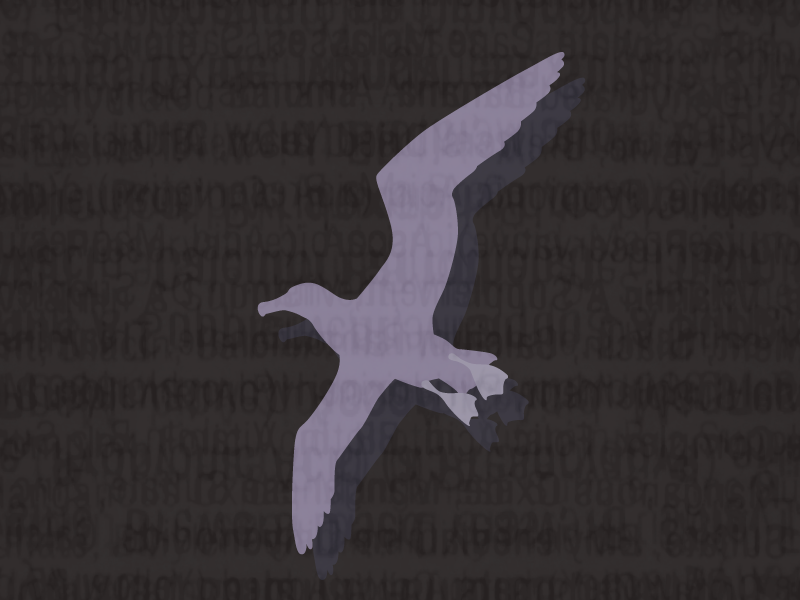We have all either read or heard about a book titled The Joy of Sex, unless the book is now too old to interest today’s young people, who seem to have preferred to discover the joy of sex firsthand rather than in print. The trouble with relying on sex as a source of joy is that it does not last long. Sex may be fun, but afterwards it can turn cold. Getting out of a bad situation can be a bleak way to start the day — or the middle of the night. Even spectacular sex diminishes in retrospect. The French have a well-known phrase: la petite mort, or the little death. After the climax, the comedown. After the high, the down-low. After love, boredom. Are you ready to do it again? Maybe yes, if you’re 19 or 20. Older than that and you’ll be getting up to wash the dishes.
But.
But there is another kind of joy that will stay with you through all your days and nights, through marriage, separation, and divorce. It never turns cold. It is the joy of syntax, and you definitely want to enjoy it.
Syntax, defined by Merriam Webster: (a) the way in which linguistic elements (as words) are put together to form constituents (as phrases or clauses); (b) the part of grammar dealing with this, and (c) a connected or orderly system: harmonious arrangement of parts or elements.
Syntax is the arrangement of words, with particular attention to harmony. It is about word order.
The dictionary offers a simpler definition for students: the way in which words are put together to form phrases, clauses, or sentences.
It is about how you write your sentences, but it is also about what you write in your sentences, because harmony is the achievement of a suitable tessitura. Look up tessitura. Tessitura is the range of territory you can cover without lapsing into language that does not fit.
You may write grandly or serenely or grittily or dispassionately or humorously or thoughtfully or furiously or sweetly or any other way, but the parts must not jar us; the whole should hold.
You probably already know the kinds of sentences that are available to us: declarative, imperative, exclamatory, and interrogative. Kinds of sentences = kinds of syntax. That’s all there is to it.
Any grammatically correct sentence is an example of syntax.
Syntax permits us to ring the morning bells, dig into the mire, spread the frosting on the cake, and, in short, make an end run around any obstacle whatever. Syntax is a world of fun.
It is also what makes you you.
Some people, talking, like to beat around the bush. That is, they tell everything except what’s important until, at last, they come to the point. Taking the long way around allows them to spring a surprise, or a truth, at the end. The reader or listener is caught up short, or relieved, or already thinking up an even longer response. These stories are frontloaded. Shaggy Dog tales, on the other hand, do the same thing but without any revelation at the end. A Shaggy Dog story holds the reader’s or listener’s attention to the very end and dispenses with it. Nothing happens, although the reader was led to think something would. A Shaggy Dog tale is a joke, often a very effective joke — unless it aggravates the listener, which a lot of Shaggy Dog tales also do.
Other writers work to place their clauses in places where they will register. Or even just make sense. When I worked as a copy editor, I was handed the manuscript and drawings for a children’s book. The sentence read, “Coming from the barn she saw her father.” The illustration showed her father coming from the barn. The sentence should have read, “She saw her father coming from the barn.” I pointed this out to my editor, but she refused to let me change it because it was by an important children’s author. I hope the kids who read the book understood that the illustration did not match the text. If they didn’t, I hope teachers helped them out. If teachers didn’t help them out, they grew up speaking more or less backwards.
Diagramming sentences was always the best way to learn both grammar and syntax, but teachers, or their bosses, did away with it. Fortunately, examples of how to diagram sentences are available online. For starters, try this site. From there you can go on to more complicated examples. The reason for doing this is not only to grasp the bare bones of our language but to figure out how to deliver those bare bones in various configurations. Various configurations will keep your writing from becoming boring. They will make sure that the word or phrase you are writing is going to land in the right place. They will also allow a degree of beauty and/or mystery to enter your work. The poetic terms assonance, consonance, and alliteration are not confined to poetry; they come in handily in prose as well. If you want, you can even write iambic pentameter in prose. Annie Dillard sometimes did that. If you don’t know what iambic pentameter is, look it up. But most of you probably already know what it is. You may even find yourself writing in iambic without knowing it. These lines turned up in a fiction book I just read, Wins and Losses: Stories, by Peter Makuck. His story “Redeye” begins like this: “The 757 cruised smoothly above the moonlit clouds. The flight was full.” From “cruised” onward, those lines are iambic. They might have been the beginning of a poem, but the author chose to write a story. And in fact, Makuck is both a fiction writer and a poet, with an ear for both prose rhythms and poetic rhythms.
Samuel Taylor Coleridge gave us “The Rime (Rhyme) of the Ancient Mariner,” Biographia Literaria, and “Kubla Khan,” although these are only the most familiar examples of his work. I think everyone remembers these verses, or at least know that they are from Coleridge’s poem about the long-ago seaman:
Day after day, day after day,
We stuck, nor breath nor motion;
As idle as a painted ship
Upon a painted ocean.
Water, water, every where,
And all the boards did shrink;
Water, water, every where,
Nor any drop to drink.
The poem’s metric beat and rhyming quatrains raise a reader’s anxiety. They carry a sense of relentlessness. We are stalled in calm — too calm — waters and wonder if we will be here for the rest of our lives. If we will die of thirst. In Coleridge’s time, we might have asked if God would forsake us.
A bird has been traveling overhead with the ship. The bird is an Albatross. We’ve come to think of an albatross as something tiresome or hampering, but in the poem it is a symbol. Critics have various notions of what the albatross represents. Some thinks it stands for Christ. Some think it stands for Beauty. Some for Strength, given that the albatross can circle the earth in less than a day.
(Incidentally, thinking about the albatross, I decided to look it up. Albatross, I mean. Apparently, syntax does not refer only to human language. Young albatrosses learn to use the “language” of their elders, which is mostly about the dances and gestures they make — a “syntax” — in wooing, before they travel on their own.)
As for his poem “Kubla Khan,” it is really only part of a poem. Coleridge was treated with laudanum (opium) as a child because he suffered from mood swings, though “mood swings” was not yet a term. Even as a child he was a devoted reader and studied poetry seriously. Later, he experimented with drugs, and when he began “Kubla Khan,” he was under the influence of opium. He described the writing as a dream. The poem was meant to be about the Mongol emperor Kublai Khan, resident in Xanadu. Unfortunately, while he was dreaming and writing, someone knocked on his door. It was “a person from Porlock.” Porlock, about whom we know nothing, has become an excuse for not finishing whatever one is writing.
But the opening lines have lasted, and readers are still teased by the thought of the rest of the poem.
Coleridge said, not under the influence of opium, “I wish our clever young poets would remember my homely definitions of prose and poetry; that is, prose, — words in their best order; poetry, — the best words in their best order.”
These are great definitions, except that we are left to worry about what the best order is and what the best words are. And for heaven’s sake, what does “best” mean? The best man may or may not be the best of men but as long as he shows up at the wedding with the ring, everyone is happy. “Best,” I suppose, is better than “better,” but there are times when we decide that as long as something is better, it is best.
How can one word be better than another? We might sweep away numbers of fairly ordinary words — nice, good-looking, red, walk — and replace them with others — friendly, attractive, fire-engine red, stroll — but the change is not exactly transforming. It’s maybe worth a dime but not a dollar. Realizing that, we may want to go to the thesaurus to find words more vivid. “Stroll” might become “amble.” The words might not be quite the same, but the same is not what you are looking for; you are looking for a word that is stronger, more informative, one that turns “walk” into a walk we can see. Before computers, we had to go to printed thesauruses to discover or remind ourselves of synonyms. Now we can find not only useful synonyms but also synonyms that almost nobody else will know of. Now that’s a pretty pickle. •
All images created by Shannon Sands.







